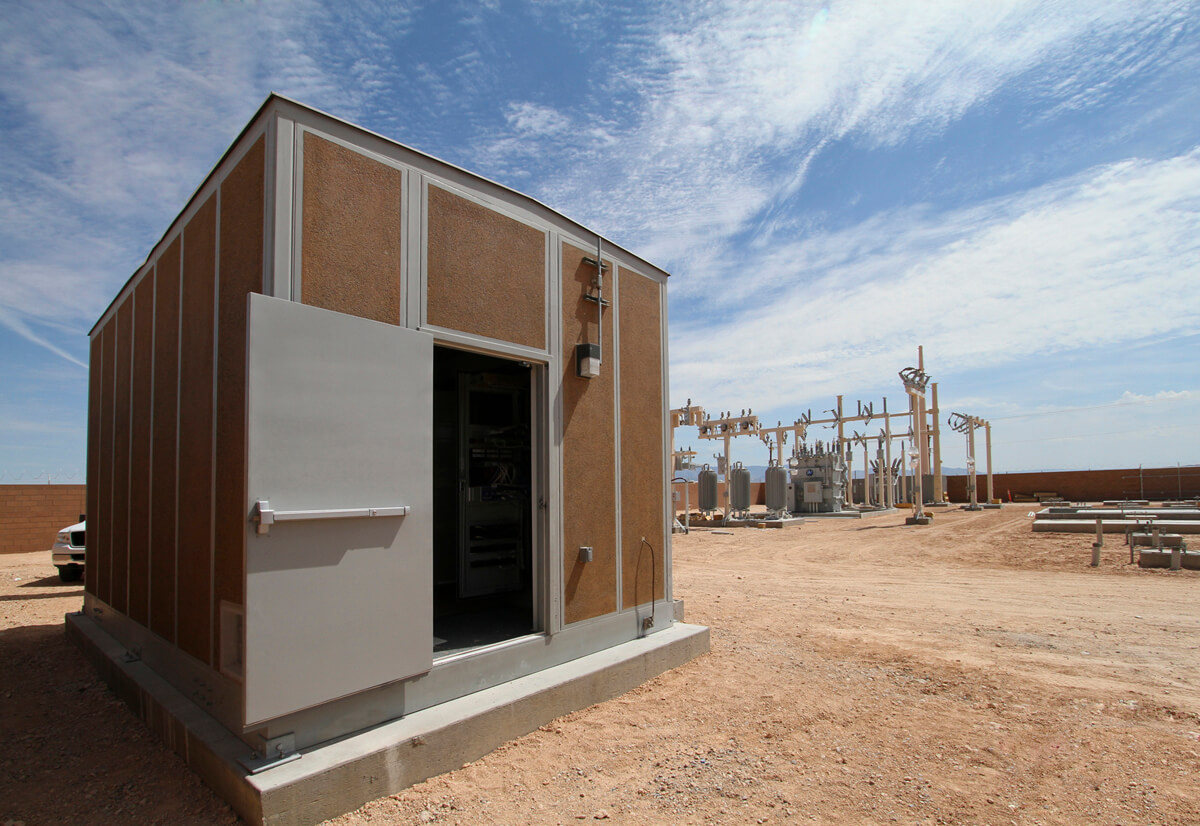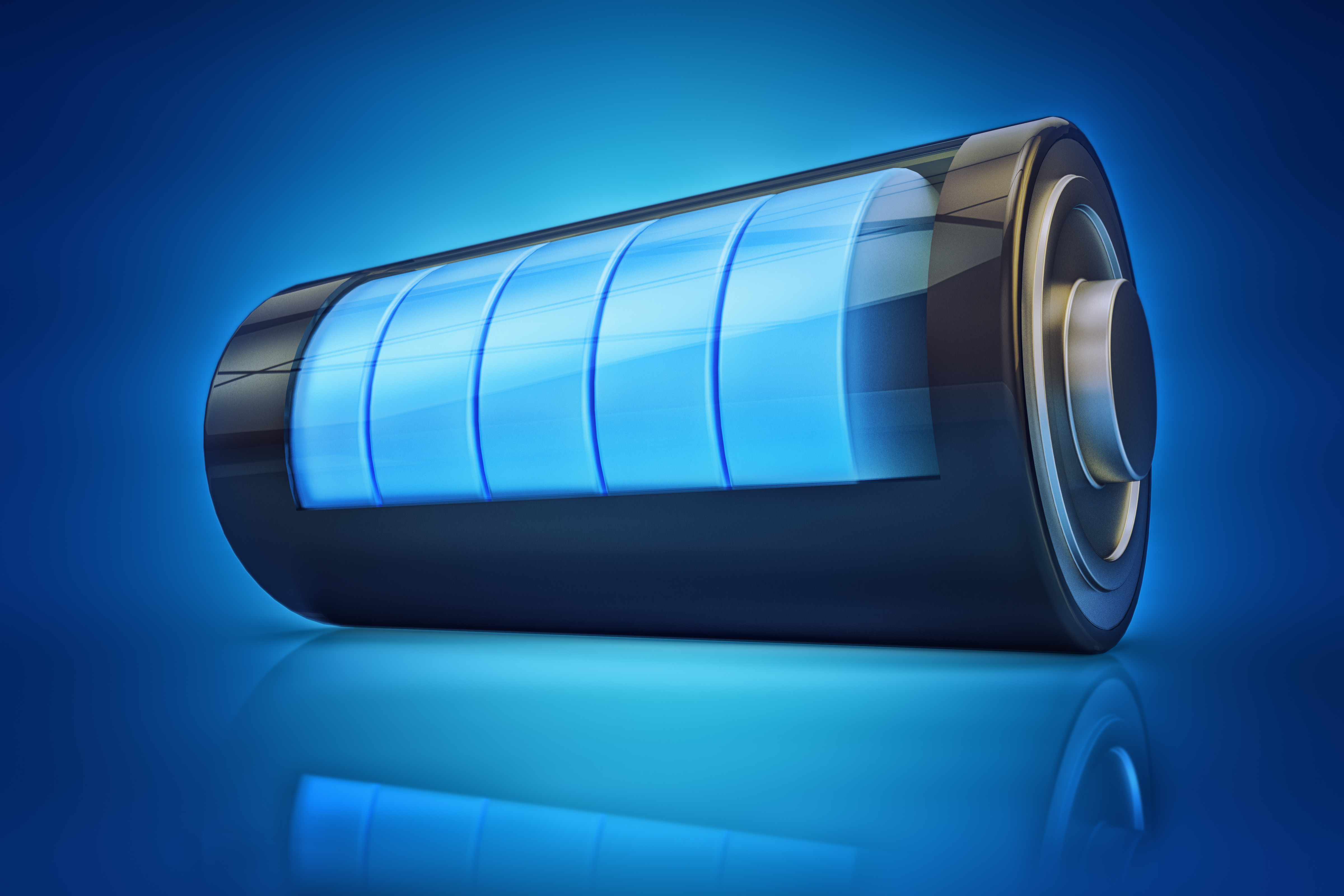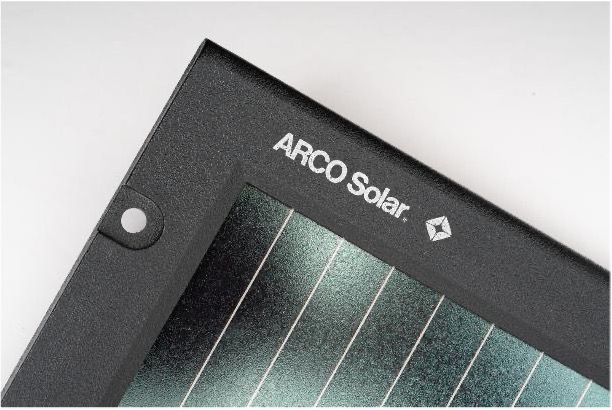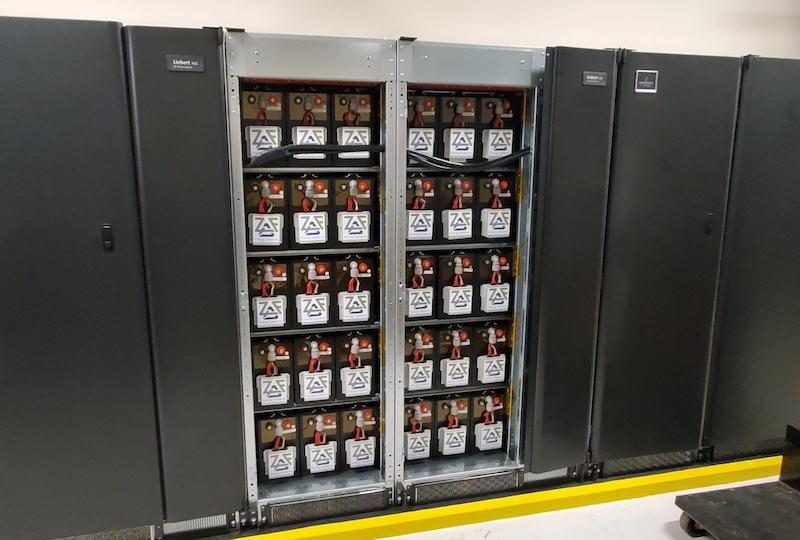Energy Storage
FranklinWH Energy Storage Inc.
Energy Storage
Dr. Josef Daniel-Ivad
Energy Storage
TRC Companies

CarbonEnfo, a cleantech company accelerating the transition to a zero-carbon economy, announced the official launch of Brytr, the first consumer-focused blockchain marketplace designed to help residential and small business owners monetize their solar Renewable Energy Certificates (sRECs). Brytr connects homeowners generating sRECs with corporations looking to purchase verified, traceable assets that will help them meet their sustainability goals. (For more background on sRECs, see FAQ below)
Brytr automates the sREC process by connecting directly to a homeowner’s existing solar monitoring system, converting energy production into digital tokens that can be exchanged for cash, gift cards, service credits or other perks. This model incentivizes installers through revenue sharing while offering corporate buyers a smarter path to decarbonization with verifiable, high-integrity sREC data. According to the Solar Energy Industries Association (SEIA), more than 10 million U.S. homes will be equipped with solar panels by 2030, with the residential sREC market expected to exceed $1.2 billion annually.
Bringing Real-Time Transparency to the Carbon Market
“Today, an overwhelming majority of residential and small business solar system owners have no way to access, package or sell the credits they generate. Brytr solves this pain point,” said Mark Bell, co-founder of CarbonEnfo. “The industry is plagued by low-quality credits and traceability issues. By connecting these small producers with companies seeking verified, high-quality sRECs, we are helping to unlock the trapped value of this asset class, preventing fraud and giving corporate buyers the verifiable confidence they need to meet their climate goals.”
As a Web3 platform, Brytr leverages the energy-efficient Cardano blockchain for its security, scalability and interoperability. This blockchain-based approach creates an immutable, transparent ledger that tracks each sREC from generation through retirement, providing unprecedented verification.
Amid the recent collapse of the voluntary carbon market, in which more than 90% of offsets did not represent genuine carbon reductions, corporate buyers are pursuing a "flight to quality,” shifting investments toward high-integrity compliance assets like sRECs, which are based on metered, verified electricity generation (MWh). This auditable data point eliminates the market’s inherent "greenwashing" risk.
Corporate ESG Commitments Drive Demand
“Not only are we offering local, premium, fully traceable solar credits, we are creating engagement programs so that our corporate partners can close the loop with their employees and customers who own PV systems,” said Bell. “Given the blockchain underpinning our transactions, no one can match the complete traceability and transparency of these sRECs. More than that, we are helping companies drive loyalty, increase retention and create lasting impact.”
Cox Enterprises, one of the largest privately held companies in the United States, served as both an initial investor in CarbonEnfo and a critical launch partner for the Brytr platform. Cox conducted a pilot of the marketplace that doubled as an innovative employee engagement strategy by purchasing high-integrity sRECs directly from employees who own PV systems. By directly connecting corporate purchasing power to local employee solar generation, the pilot provided a powerful proof point that Brytr delivers a smarter path to decarbonization.
“At Cox, we are deeply committed to investing in innovative cleantech companies that offer transparent solutions to accelerate the global shift toward sustainability,” said Alex Pistner, Senior Director at Cox Cleantech, investment arm of Cox Enterprises. “CarbonEnfo is focused on the highly fragmented environmental credit sector, bringing residential solar credits online and onto the blockchain. This digital transformation is an essential step for driving progress in the clean energy market.”
FAQ
What’s an sREC?
A Solar Renewable Energy Certificate (sREC) is a market-based instrument representing the environmental property rights associated with one megawatt-hour (MWh) of electricity generated by a solar power system. When a solar system generates power, it creates two distinct sources of value: the physical electricity and a corresponding sREC, which serves as a certificate for that MWh of clean generation. Because green electricity cannot be tracked once it enters the grid, the sREC represents the legal and auditable "greenness" of the energy, often seen as a currency that puts a positive value on clean energy. Crucially, only the party that officially retires the sREC (takes it out of circulation) can legally claim the environmental benefits associated with clean power generation.
How does the Brytr platform work for residential sellers of sRECs?
Brytr is free for homeowners to join—no upfront costs, no monthly fees, no hidden charges. And signing up takes just a few minutes, with no hardware to install, no software to download. Once connected to the user’s home energy system, the platform operates on a simple transaction-based model, with Brytr retaining a service fee from each sREC sale to maintain the technology and support that makes the process seamless.
How many sRECs can I produce a year and how much money can I make?
Depending on system size, the average residential solar energy system can generate 7-10 sRECs per year, with the homeowner standing to gain up to $250 or more from their sREC sales given current exchange rates. Over the typical solar panel lifespan, homeowners can earn over $5,000 or more from their sREC sales—essentially a revenue stream that continues as long as their panels produce energy.
What states is the Brytr marketplace available?
CarbonEnfo is launching Brytr initially in voluntary sREC markets, with rollouts planned across Arizona, Texas, Florida, Georgia and North Carolina. The platform is designed for residential solar owners who retain ownership of their sRECs; customers in certain regulated compliance markets such as Massachusetts, New Jersey, and Pennsylvania may have restrictions on sREC trading through their existing programs.
How does the two-sided marketplace work?
On the supply side, Brytr partners with solar installers who share in revenue from their customers’ sREC transactions, creating a natural acquisition channel. On the demand side, Brytr enables values-driven companies to engage their own employees and customers who own solar systems, closing the loop between corporate sustainability goals and stakeholder communities. This creates loyalty, drives retention and generates authentic environmental impact.
CarbonEnfo | https://carbonenfo.io
Brytr | https://brytr.us

Technology group Wärtsilä has appointed Luke Witmer as Vice President of Software Engineering for its Energy Storage business. The appointment marks a significant milestone in Wärtsilä’s continued investment in software innovation and leadership.

Luke has been instrumental in Wärtsilä’s technology evolution since 2015, prior to Wärtsilä’s acquisition of Greensmith Energy. Over the past decade, Luke has helped drive the development of the industry-leading GEMS Digital Energy Platform, Wärtsilä’s proprietary software for monitoring, controlling, and optimising complex power systems. GEMS manages all assets—batteries, renewables, thermal generation, and balance of plant—boosting uptime and efficiency, forecasting and optimising energy dispatch with ancillary services, and unlocking full revenue potential across the portfolio. Under Luke’s leadership of the Data Science division, the platform’s forecasting, optimisation, and analytics capabilities have advanced significantly, enabling customers to maximise performance, succeed in complex markets, and efficiently manage diverse assets.
“Software is at the heart of today’s energy transition.” said Luke Witmer. “Energy storage is enabled by advanced software, and the renewable transition is not possible without energy storage. In an analysis of our hybrid power plants globally, every 100MWh of energy storage capacity we install enables an average of 340 GWh/year of renewable energy to enter the grid. A small amount of energy storage goes a long way, helping to keep energy affordable and reliable. The key is in the software; enabling scale, reducing risk, and optimising the operation of our customers’ assets in a world that is continuously changing.”
Luke’s appointment comes at a pivotal time for Wärtsilä Energy Storage, which became an independent reporting segment in April 2025. With over 130 projects and over 19 GWh of energy storage capacity globally, Wärtsilä is recognised as a leader in energy storage solutions. The GEMS Digital Energy Platform, now in its sixteenth year of development, is widely regarded as one of the most mature and advanced control platforms in the market.
“Luke brings deep expertise and proven leadership that will help customers optimise performance and adapt to an increasingly complex energy landscape,” said Tamara de Gruyter, President of Wärtsilä Energy Storage. “By expanding the GEMS platform and guiding its evolution with foresight into future market opportunities and challenges, Luke will position Wärtsilä and our customers for long-term success.”
Under Luke’s leadership, the software team will embrace the areas where Wärtsilä has already demonstrated industry-first innovations, while strengthening a customer-first focus that aims to deliver value at scale.
Wärtsilä Energy Storage | www.wartsila.com/energy/energy-storage

The Building Performance Association (BPA) has released its newest Energy Efficiency Jobs in Americareport, and the results reflect what many in our community already feel on the ground: energy efficiency is growing—and fast. In 2024, the sector added nearly 100,000 new energy efficiency jobs, a 4% increase that outpaced every other U.S. energy sector. Today, almost 2.4 million people work in energy efficiency across construction, HVAC, weatherization, manufacturing, engineering, and more.
The report shows that energy efficiency is now the largest energy sector in 39 states, powered largely by small businesses—95% of employers have fewer than 100 workers. And with median wages 20% above the national median, these jobs continue to offer strong, stable careers that support local economies. At the same time, nearly nine in ten companies are still facing hiring challenges, reinforcing the need for continued investment in workforce training and recruitment.
For anyone working to make homes healthier, more efficient, and more affordable, this year’s report offers both validation and momentum. Energy efficiency jobs are growing because the work matters—and demand for it continues to rise.
You can explore all national and state insights in the full Energy Efficiency Jobs in America report here.
Building Performance Association | https://building-performance.org/

CenterPoint Energy and Enel North America have launched a new demand response program for commercial, institutional, and industrial organizations in southwestern Indiana. This initiative, called the CenterPoint Energy Aggregated Demand Response Program, enables organizations to earn incentive payments for making targeted energy reductions that help CenterPoint Indiana Electric maintain local grid reliability.
“Our focus remains on delivering reliable service to our customers and communities every day,”said Muss Akram, Vice President of Utility Strategy at CenterPoint. “Through this program, we’re working with Enel to strengthen reliability, manage demand and provide our customers an opportunity to be compensated for supporting the grid when it’s needed most.”
Demand response programs provide an opportunity for organizations to earn incentive payments while helping maintain a reliable electric system. When utilities or grid operators experience supply and demand constraints, they dispatch local organizations that have agreed to reduce energy usage during these times of high demand.
Commercial, institutional and industrial organizations in the CenterPoint Indiana Electric service territory are eligible to enroll in the new program. As the exclusive demand response provider for this program, Enel will work with organizations to define participation strategies, manage enrollment and execution, and maximize revenue from participating. During a demand response dispatch, the Midcontinent Independent System Operator (MISO) will instruct Enel’s network of participants to curtail electricity usage in anticipation of emergency conditions on the grid. Common reduction strategies include modifying manufacturing processes, adjusting HVAC equipment and reducing non-essential lighting.
This program builds on CenterPoint’s existing Smart Cycle demand response program for residential customers. Those participating in the Smart Cycle program can earn a one-time $75 enrollment credit and a $7.50 bill credit each month from March through November for participation. To learn more about this program, visit CenterPointEnergy.com/SmartCycle.
CenterPoint Energy | https://www.centerpointenergy.com/en-us/
Enel North America | enelnorthamerica.com

RecycLiCo Battery Materials Inc. (“RecycLiCo” or the “Company”) (TSX.V: AMY | OTCQB: AMYZF | FSE: ID4), a critical minerals refining and lithium-ion battery upcycling company, is pleased to announce that construction permit applications for its new research and process-development laboratory in Delta, British Columbia, have been approved by the local government.
With the lab design complete and permits approved, the Company has already advanced early construction preparation, reducing schedule risk ahead of full build-out. Construction activities will now continue to scale, positioning the project for substantial completion in early 2026.
The new facility will support the Company’s ongoing advancement of its critical minerals and metals resource-recovery technologies, enhance operational readiness for commercial deployment, and expand RecycLiCo’s ability to refine processes in response to evolving market and industry demands.
RecycLiCo will provide further updates as construction progresses.
RecycLiCo Battery Materials I https://recyclico.com/

LandBridge Company LLC (NYSE: LB; NYSE Texas: LB) (“LandBridge” or the “Company”) announced that it has entered into development agreements (Option to Lease Agreements) with subsidiaries of Samsung C&T Renewables, LLC (“SCTR”) providing the option to lease acreage for two potential Battery Energy Storage System ("BESS") projects in Pecos and Loving counties, Texas with an aggregate capacity of 350 MW. The agreements grant SCTR exclusive rights at each site location to deploy and develop a BESS facility designed to enhance grid stability, support renewable energy integration, and deliver clean power to the local grid. The projects, which could achieve commercial operation as soon as year-end 2028, represent the first BESS projects on LandBridge’s acreage and underscore the Company’s commitment to leveraging its premium land assets for innovative projects across conventional and renewable energy development.
Jason Long, Chief Executive Officer of LandBridge, stated, “Our initial agreements with Samsung C&T Renewables, LLC represent a meaningful step in further strengthening and diversifying our clean energy portfolio. We look forward to building on this momentum as SCTR continues to expand its leadership position in the energy transition space.”
LandBridge | www.landbridgeco.com

Ionic Mineral Technologies (“Ionic MT”) announced the confirmation of a major, high-grade deposit of rare earth and critical minerals at its fully permitted Silicon Ridge project in Utah (“Silicon Ridge”). The results validate one of North America's most significant holdings of these strategically vital materials, establishing a domestic source for elements essential for advanced AI semiconductor chips, permanent magnets, defense surveillance systems, and energy technologies.
Independent assays from ALS Chemex, confirm the deposit as a halloysite-hosted ion-adsorption clay (IAC) – the same geological formation that supplies approximately 35-40% of China's total rare earth production and over 70% of the world’s heavy rare earth elements.
Critically, Silicon Ridge demonstrates what Ionic MT characterizes as an ‘IAC-Plus’ profile: rare earth concentrations comparable to China’s deposits, but with subsequent hydrothermal, magmatically enriched grades of critical technology metals including gallium, germanium, rubidium, cesium, scandium, lithium, vanadium, tungsten, niobium, and a full suite of light and heavy rare earths (La–Lu, Y).
“This confirmation is a watershed moment for American resource independence. For the first time, we have a domestic, shovel-ready source for a full spectrum of critical minerals, all extractable with a faster, cleaner process than traditional hard rock mining and extraction,” said Andre Zeitoun, founder and CEO of Ionic MT. “With our mining permits and processing facility in place, we can now move rapidly to production, reducing a key strategic vulnerability for the United States.”
The strategic importance of the deposit is underscored by China's December 2024 export ban on gallium, germanium, and antimony to the United States, combined with April 2025 export licensing requirements on critical rare earth elements like, Lutetium, Scandium, Yttrium, globally. The U.S. Government Accountability Office has identified critical material shortfalls exceeding $18.5 billion, with the Pentagon recently moving to secure a $2 billion emergency stockpile of strategic minerals in response to these supply chain vulnerabilities.
Project Highlights & Validation
The results are based on an extensive exploration program, with all assays conducted by third-party, ISO-certified ALS Chemex laboratories. Ionic MT has initiated a Preliminary Economic Assessment (PEA), with completion targeted for H1 2026.
Utah Support
Using a low-emission, nearly waste-free process with up to 95% recovery, Ionic MT turns Utah’s geology and infrastructure into a national strategic asset.
“Utah is once again proving we have the greatest resources, vision and determination to power America’s future,” said Utah Senate President J. Stuart Adams. "Ionic Mineral Technologies’ work at Silicon Ridge is the prime example of how responsible development creates jobs, strengthens our national security and builds resilient, American-made supply chains. Our state is uniquely positioned to lead the transition to cleaner energy by developing next-generation resources right in our own backyard. By doing so, we reduce reliance on foreign nations and secure America’s energy future.”
“Our energy and national security depend on having a reliable supply of critical minerals – and Utah is uniquely positioned to lead the way,” said Utah House Speaker Mike Schultz. “This project shows what Utah does best: using our natural resources, strong infrastructure, and innovative industry to solve big challenges and embrace big opportunities. Ionic Mineral Technologies is helping us reduce dependence on foreign adversaries while creating new opportunities and long-term stability for Utah families and our economy.”
Background
Ionic MT’s vertically integrated model converts a single halloysite clay feedstock from its Silicon Ridge and Halloysite Hills deposits into three high-value, co-product streams:
This co-product approach captures maximum value, minimizes waste, and creates a cost-competitive, domestic supply chain for materials vital to the U.S. economy and military. Ionic MT’s halloysite-hosted ion-adsorption clays enable simple, low-temperature ion exchange — avoiding costly roasting, high-heat processing, or heavy acids. This delivers a cleaner, faster, and cost efficient pathway to production than traditional hard-rock mining.
Ionic MT is being advised by Dr. Eric H. Christiansen, a foremost expert on the volcanology and geology of the Soldiers Pass and Lake Mountains region in Utah, to interpret the Silicon Ridge discovery and determine its full scope. As a Professor Emeritus at Brigham Young University and a former Scientist-in-Charge of the USGS Volcanic Hazards Program for Utah, he brings 30 years of knowledge of the district's rock units, structures, and geologic evolution.
Investor and Strategic Partner Engagement
Ionic MT has engaged Citigroup, which is serving as the exclusive capital markets adviser to the company.
Ionic Mineral Technologies | https://ionicmt.com/
Alternative Energies Nov 25, 2025
Modernizing the electric grid involves more than upgrading control systems with sophisticated software—it requires embedding sensors and automated controls across the entire system. It's not only the digital brains that manage the network but also ....



The solar industry’s rapid evolution is a story of innovation, fierce competition, and dramatic exits. As countries move toward decarbonization and grow the share of renewable energy in the total energy mix, the commercial solar panel sector has se....
Utility-scale solar plants are under mounting pressure to deliver maximum energy output while meeting strict performance guarantees. This pressure is reshaping the role of irradiance monitoring, where precision now directly affects a project's financ....
The pressures solar developers face are growing as fast as the demand for the sites they’re racing to build. Renewable energy installation will likely continue its unprecedented trajectory, having averaged 28 percent annual expansion in the la....
Wind power has been a highly successful ....
As wind turbines keep growing taller and....
2024 finally marked the return to a "normal" consumer auto market. After four years of turmoil, car buyers no longer face inventory shortages or long waits for their preferred vehicles. While many factors contributed to the auto market i....
The conversation around energy often centers on grid reliability, skyrocketing generation demand, backup power, and consumer savings. Residential Battery Energy Storage Systems (BESS) have become known for their ability to provide backup power and ma....
As the United States retreats from its investment in the energy transition, Canada and other countries are stepping up their efforts to invest in and grow their energy storage industries. Despite this changing market dynamic, rechargeable zinc batter....
Modernizing the electric grid involves more than upgrading control systems with sophisticated software—it requires embedding sensors and automated controls across the entire system. It's not only the digital brains that manage the network but also ....
It is no secret that the current administration harbors hostility toward renewable energy. From tariffs to tax breaks, it seems that everywhere you turn there’s a new hurdle or wall threatening to slow or erase the major gains the industry has made....
After months of debate in Congress, the One Big Beautiful Bill Act (OBBBA) was finally signed into law. With the goal of restructuring and simplifying federal incentive programs while reducing long-term costs, the OBBBA comes with several updates and....